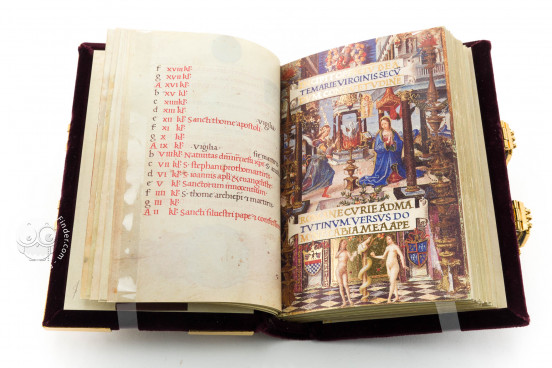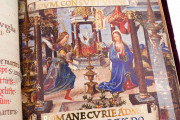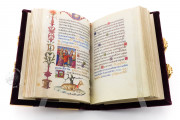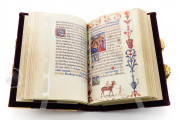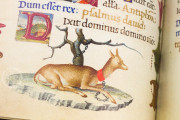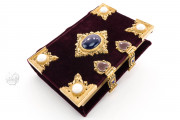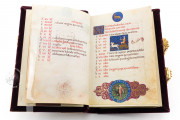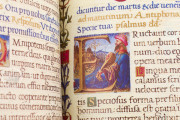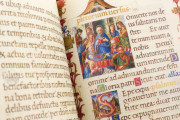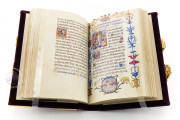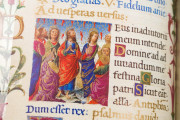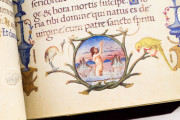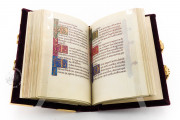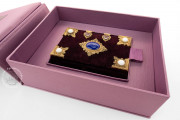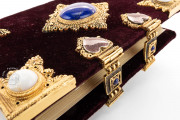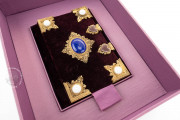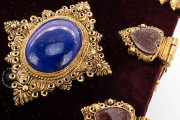The Mirandola Hours takes its name from one of its patrons, Galeotto Pico della Mirandola (1467-1499). It is a book of hours, the favored book for private Christian devotion of the late Middle Ages and the early modern period. It was created in Italy, probably in Ferrara or Mantua, around 1490-1499. The extensive high-quality illumination—four full-page miniatures at the major text divisions as well as historiated and decorated initials and painted borders—is attributed to Gian Francesco de Maineri, known principally for panel painting.
The book opens with a liturgical calendar. The text proper is the Hours of the Virgin according to the Use of Rome, followed by the Penitential Psalms and litany, the Little Hours of the Cross, and the Office of the Dead, each introduced by a full-page miniature.
Exquisite Italian Renaissance Book of Hours
The four full-page illuminations introducing the major divisions of the book are exceptionally crafted compositions set in landscapes framed by either trompe l'oeil architectural motifs or motifs reminiscent of ancient Roman wall painting.
The pages with "historiated initials"—really, small miniatures that take the place that a historiated initial would occupy—have painted borders with fantastical candelabra and bas-de-page vignettes.
The Annunciation
The Annunciation to the Virgin at the opening of the Hours of the Virgin appears to take place in a courtyard flanked by the loggias of contemporary Italian palaces (fol. 13r). In the distance is pictured a phoenix rising from flames within a classicizing temple-like structure. Below are the coats of arms of the manuscript's patrons and a representation of the Temptation of Adam and Eve, set on a tiled floor.
Personified Planets
The calendar, which includes several Franciscan saints, is illustrated with the signs of the zodiac, the labors of the months, and—for January through July—personifications of the planets and other heavenly bodies. These personifications—each set before a starry sky—are remarkable for their inclusion alone, but they are also unusual in that they wrap around the text.
Exceptional Humanistic Calligraphy
The manuscript's text is written in a fine Humanistic Minuscule with rubrication in blue and gold. The dozens of decorated minor initials are rendered as if formed from rough-hewn branches, many set before bucolic landscapes.
A Princely Manuscript for Private Devotion
The presence of the coats of arms of the Mirandola and Este families that grace the miniature of the Annunciation indicates that the manuscript was made for Galeotto, Prince of Mirandola, and his wife, Bianca d'Este, presumably before the prince's death in 1499. The manuscript's large size and sumptuous decoration showcase the wealth of the household.
The manuscript was later owned by Michael Tomkinson (1841-1921), John Ruskin (1819-1900), and Charles William Dyson Perrins (1864-1958). Perrins had the book rebound (in reddish brown leather) by Katharine Adams between 1902 and 1908. The manuscript was acquired by the British Museum in 1959. The manuscripts of the library of the British Museum were transferred to the British Library in 1973.
We have 1 facsimile edition of the manuscript "Mirandola Hours": Das Mirandola-Stundenbuch facsimile edition, published by Coron Verlag, 1995
Request Info / Price
